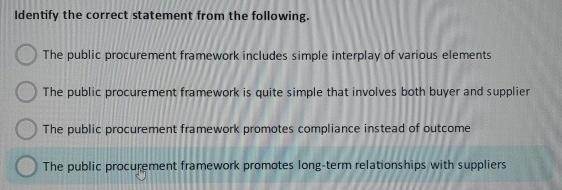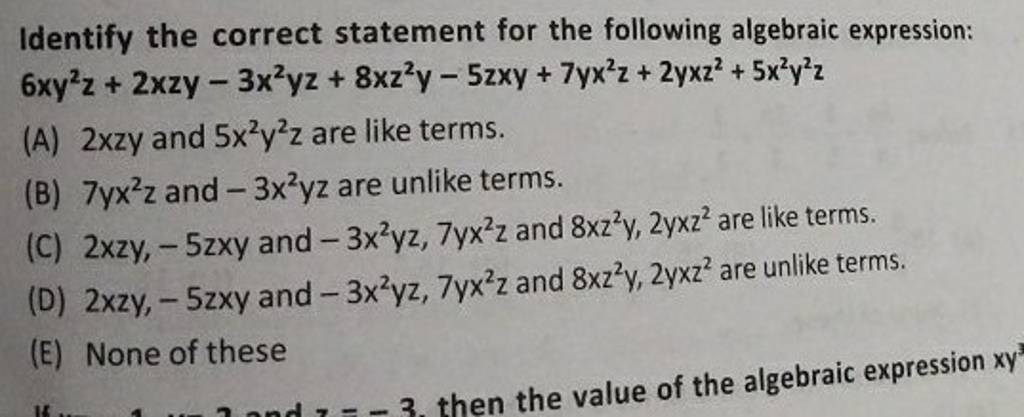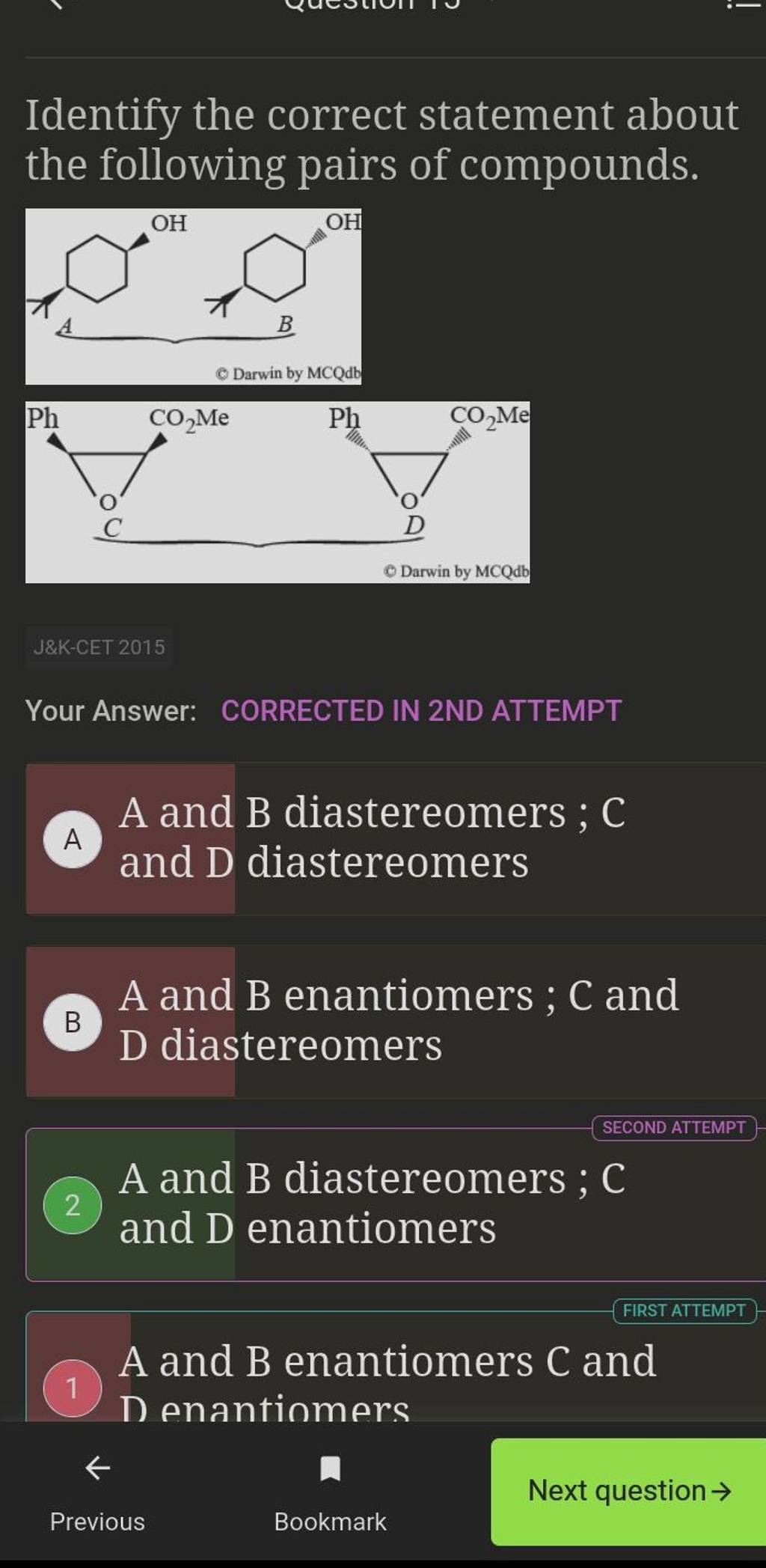Identify The Correct Statement From The Following

Imagine a room buzzing with anticipation. Rows of students, brows furrowed in concentration, pore over complex equations and nuanced passages. The air crackles with the quiet intensity of minds wrestling with abstract concepts, each determined to pinpoint that one, elusive truth: the correct statement.
This scenario, played out in classrooms and boardrooms alike, highlights a fundamental skill that transcends academic boundaries. It's the ability to critically analyze information, sift through ambiguity, and arrive at a well-supported conclusion. Mastering this skill is crucial not only for academic success but also for navigating the complexities of the modern world.
The seemingly simple task of identifying the correct statement underscores the importance of logic, reasoning, and a healthy dose of skepticism. It's a process that demands more than just rote memorization; it requires a deep understanding of the underlying principles and the ability to discern subtle differences between seemingly similar options.
The Foundation: Critical Thinking and Logic
At its core, identifying the correct statement relies on critical thinking. This involves actively analyzing information, questioning assumptions, and evaluating evidence. It's a deliberate process that moves beyond simply accepting information at face value.
Logic, the science of reasoning, provides the framework for this analysis. Deductive reasoning, for example, allows us to draw specific conclusions from general principles. Inductive reasoning, on the other hand, involves making generalizations based on specific observations.
Understanding these logical principles is essential for evaluating the validity of different statements. A logically sound statement will be consistent with established facts and principles, free from contradictions, and supported by credible evidence.
Common Pitfalls and How to Avoid Them
The path to identifying the correct statement is often fraught with potential pitfalls. One common trap is confirmation bias, the tendency to favor information that confirms existing beliefs. This can lead individuals to selectively focus on evidence that supports their preconceived notions while ignoring contradictory information.
Another challenge is the presence of cognitive biases, systematic patterns of deviation from norm or rationality in judgment. These biases can distort our perception of information and lead to flawed conclusions. Understanding these biases is the first step in mitigating their influence.
To avoid these pitfalls, it's crucial to approach the task with an open mind, actively seeking out diverse perspectives and challenging one's own assumptions. It also helps to break down complex statements into smaller, more manageable parts, analyzing each component individually.
The Role of Background Knowledge and Context
While logic and critical thinking are essential tools, they are not sufficient on their own. Identifying the correct statement often requires a solid foundation of background knowledge. This provides the context necessary to understand the nuances of the different options and evaluate their validity.
For example, if the statements relate to a scientific concept, a strong understanding of the relevant scientific principles is crucial. Similarly, if the statements concern historical events, a familiarity with the historical context is essential.
Context is equally important. The meaning of a statement can change depending on the surrounding information. Paying attention to the context can help clarify ambiguities and reveal hidden assumptions.
Practical Strategies for Success
Several practical strategies can enhance your ability to identify the correct statement. One effective approach is to eliminate incorrect options first. By systematically identifying and discarding false statements, you can narrow down the possibilities and increase your chances of selecting the correct answer.
Another helpful technique is to look for keywords or phrases that indicate accuracy or inaccuracy. For example, words like "always" or "never" often signal overly broad generalizations. Similarly, vague or ambiguous language can be a sign of a poorly formulated statement.
Finally, it's always a good idea to double-check your answer before submitting it. A fresh look can often reveal errors in reasoning or overlooked details.
The Significance Beyond Academics
The ability to identify the correct statement is not just an academic exercise; it's a vital skill for success in many areas of life. In the workplace, it's essential for making informed decisions, solving problems effectively, and communicating clearly.
In the realm of civic engagement, it's crucial for evaluating political claims, understanding complex policy issues, and participating in informed debates. In our personal lives, it helps us navigate relationships, manage finances, and make sound judgments about our health and well-being.
In an era of information overload, the ability to discern truth from falsehood is more important than ever. Learning to identify the correct statement is an investment in critical thinking skills that will pay dividends throughout your life.
Cultivating a Mindset of Inquiry
Ultimately, the ability to identify the correct statement stems from a mindset of inquiry. This involves a willingness to question assumptions, challenge conventional wisdom, and seek out evidence-based answers. It's a lifelong journey of learning and discovery.
By embracing this mindset, we can become more discerning consumers of information, more effective problem-solvers, and more engaged citizens. We can move beyond simply accepting what we are told and instead become active participants in shaping our own understanding of the world.
Therefore, the next time you encounter a question asking you to "Identify the correct statement," remember that you are not just taking a test. You are honing a skill that will empower you to navigate the complexities of life with clarity, confidence, and conviction. Embrace the challenge!


![Identify The Correct Statement From The Following [Solved] Identify the correct statement among the following - Organic Che..](https://classroom-notes.cdn.askfilo.com/thumb_classroom_29768839_SFHGY.jpeg)

![Identify The Correct Statement From The Following [ANSWERED] Identify the correct statement from the following. Stirring](https://media.kunduz.com/media/sug-question/raw/80254125-1659977893.206813.jpeg?h=512)

![Identify The Correct Statement From The Following [ANSWERED] Read the following statements and Identify the correct - Kunduz](https://media.kunduz.com/media/sug-question-candidate/20210812132308544982-1890936.jpg?h=512)






